Best Video Cards: April 2014
by Ryan Smith on April 30, 2014 10:00 AM EST
As April comes to a close we’re back once again with our monthly guide to video cards.
Compared to the February/March time period and the flurry of activity coinciding with the launch of NVIDIA’s Maxwell architecture, April has been a much quieter month. We have still seen some big events this month, but for the most part the makeup of the video card market for April looks very similar to March.
The big product launch for April was of course AMD’s new flagship dual GPU card, the Radeon R9 295X2. Packing a pair of Hawaii GPUs, AMD went above and beyond the norm for their latest dual GPU card. By utilizing a closed loop liquid cooler – a novel enhancement to video card cooling – AMD was able to use their powerful (and power hungry) Hawaii GPUs without any compromises, shipping the card at a blistering 1019MHz with both GPUs fully enabled. From a performance perspective the R9 295X2 is for all intents and purposes equivalent to a set of R9 290X Ubers in CrossFire, but taking up less space and more importantly achieving that level of performance with greatly reduced noise levels. However R9 295X2 is also a hungry card, and will set back buyers $1500 and 500W in load power consumption, so it goes without saying that it’s decidedly in the luxury category and will only be affordable to a small number of buyers.
Meanwhile NVIDIA did not announce any new products in April. In fact they launched one less product than we expected. The company’s dual-GPU GeForce GTX Titan Z, which was previously announced in March at GTC 2014, was scheduled to launch this month. However it is as of this morning a no-show with no word from NVIDIA on a delay, so we can only assume it has been delayed in to May.
NVIDIA did however update their desktop GeForce video game bundle this week; in fact over the last two weeks both NVIDIA and AMD refreshed their bundles ahead of the next couple of months. For the GTX 660/760 and higher NVIDIA has replaced their Daylight bundle with Ubisoft’s forthcoming open world techno thriller Watch Dogs, which is scheduled to launch at the end of May. Meanwhile AMD instituted a massive overhaul of their Never Settle Forever program, which had otherwise been winding down this year. Never Settle Forever now covers virtually all of AMD’s Radeon 200 cards, and while most of the games in the collection are essentially budget/classic titles, at the silver and gold tiers AMD is anchoring the collection around the recent and forthcoming AAA titles Thief and Murdered: Soul Suspect.
In AMD’s case the ramp up of Never Settle Forever coincides with the final breath of Cryptocoin Mania, which after tapering off in March has finally fully subsided. Video card prices are now very healthy for AMD and NVIDIA buyers, with almost every card available at (or even below) MSRP. Which is all the more reason both companies are ramping up bundles to help their competitive positioning.
Anyhow, market summaries behind us, let’s look at individual recommendations. As always, we’ve laid out our ideas of price/performance bands and recommendations in our table below, with our full explanations and alternative options to follow. As always, in the case of the sub-$200 market it’s worth pointing out that there’s a video card for roughly every $10, so picking a good video card is as much about budgets as it is finding an especially strong card.
| April 2014 GPU Performance Guide | ||||
| Performance Band | Price Range | Recommendation | ||
| 1080p (Low) | $99-$149 | AMD Radeon R7 250X | ||
| 1080p (Med) |
$149-$199
|
|||
| 1080p (High) |
$199-$299
|
|||
| 1440p (Med) |
$299-$399
|
|||
| 1440p (High) |
$399-$679
|
|||
| 1440p (Max) |
$679+
|
|||
| 4K/Multi-Monitor (High) |
$1200+
|
|||
As a general recommendation for gaming, we suggest starting at $99. There are cards below this price, but the amount of performance you have to give up below $99 far outweighs the cost. Even then, performance gains will generally exceed the price increases up to $150 or so.
Meanwhile for gamers looking for high quality 1080p gaming or better, that will start at $199. Going above that will find cards that are good for 1440p, 4K, and multi-monitor, while going below that will find cards that will require some quality sacrifices to stay at 1080p.
Budget (<$100): AMD Radeon R7 250X
At $99 there is no other card even worth considering besides AMD’s Radeon R7 250X. NVIDIA’s closest cards remain more expensive for the performance, so compared to both NVIDIA and AMD’s lineups the R7 250X will outperform any AMD or NVIDIA card at similar prices, making it the fastest thing at this price.
From a performance perspective the R7 250X isn’t going to quite hit the sweet spot we outlined earlier, but for those gamers on a strict budget it will get the job done. In the long run it should be able to run most games even at 1080p with medium-to-low settings, along with keeping texture quality down a notch to account for its 1GB of VRAM. Battlefield, GRID 2, and even Total War: Rome 2 can easily hum along on this card at decent settings at 1080p.
Mainstream Sweet Spot ($149): AMD Radeon R7 265
Among the crowded $149 market our primary recommendation is the Radeon R7 265, AMD’s recently launched Pitcairn card designed to lock in this price point. Essentially a 7850 with a higher GPU clockspeed and a revised memory bus allowing for higher memory clockspeeds, the R7 265 a very capable card for the price.
From a performance standpoint the R7 265 not going to be able to play every game at 1080p at high settings, but it will be fast enough for medium-to-high depending on the game, which will be a couple of notches higher than what the $99 cards can do. Meanwhile the 2GB of VRAM will mean that future games shouldn’t bog down the card quite as badly; higher graphical fidelity games will slow it down like any other card, but there’s enough VRAM to keep up with the demands of higher resolution textures and heavier use of intermediate buffers.
Runner Up: NVIDIA GeForce GTX 750 Ti
Since our guide is written on the assumption that most buyers are looking for the best performance at a given price, our performance recommendations are going to favor AMD, as they’re more willing to throw out larger, more powerful cards at these sub-$200 price bands. NVIDIA on the other hand isn’t going to be able to directly compete with AMD on price/performance, but they do have an interesting technological advantage for gamers who are looking for a different set of tradeoffs.
Thanks to NVIDIA’s new Maxwell architecture, at $149 they’re able to offer the GeForce GTX 750 Ti, a card that offers performance approaching the R7 265 with much lower power consumption. The GTX 750 Ti is a sub-75W card – no external PCIe power connector required – allowing it to work in cases and systems where the near-150W R7 265 cannot, while also offering the improved acoustics that come with lower power consumption. So for OEM upgrades, or buyers just looking for something even quieter, the GTX 750 Ti is an interesting alternative. Just keep in mind that from a performance standpoint it trails the R7 265 by about 16%.
There are also a pair of options between here and the R7 250X that bear mentioning. The R7 260X resides at $119 and goes up against the GTX 750, with AMD holding a performance advantage similar to R7 265 vs. GTX 750 Ti. We’re fans of stepping up to the greater performance of the $149 cards, but it does offer something between $99 and $149.
1080p Gaming ($199): AMD Radeon R9 270X
Moving up our product lists, at $199 we’re finally up to cards that are fast enough to play most games at 1080p with high-to-ultra settings. More powerful/expensive cards will offer a further edge for the most demanding games, along with offering a bit more longevity, but for most games at the extremely common resolution of 1080p, it only takes $209 to hit a great level of graphical fidelity for that resolution.
To that end there is no better card at this price than AMD’s Radeon R9 270X. Based on a fully enabled Pitcairn GPU, 270X easily offers the most bang for the buck, keeping its distance from NVIDIA’s GTX 660 while getting rather close to NVIDIA’s more expensive GeForce GTX 760.
Runner Up: NVIDIA GeForce GTX 760: The GeForce GTX 760 offers a small but respectable performance lead over the Radeon R9 270X. On a pure price/performance basis it doesn’t make sense, and at $239 sits in an odd gap between the $199 270X and the more capable $300 cards, but for buyers looking for an NVIDIA option for 1080p gaming around $199, it’s as close as one can get.
Reaching For 1440p ($299): AMD Radeon R9 280X
Based on AMD’s venerable Tahiti GPU, the Radeon R9 280X offers the performance of the Radeon HD 7970 at around half the launch price of the aforementioned card. As one of AMD’s stronger enthusiast-class cards it was more strongly affected by Cryptocoin Mania and has taken the longer to finally get back down to MSRP. But now it is here and secures a win accordingly.
For the 280X we’re looking at a card that will straddle 1080p and 1440p. It’s not quite fast enough to work in every game at 1440p with high quality settings, but it’s fast enough for many of them. Alternatively, it’s fast enough at 1080p that it has no problem at that resolution with everything cranked up, including high levels of MSAA and even SSAA in some games. Plus the 3GB of VRAM will give it some leg room if future games demand more VRAM.
On a competitive basis the R9 280X performs very similarly to NVIDIA’s GeForce GTX 770, generally trailing by a few percent. However with AMD making the conscientious decision to undercut NVIDIA on pricing here, it gets our nod for this bracket.
Runner Up: NVIDIA GeForce GTX 770
NVIDIA’s counterpart to the R9 280X, the GeForce GTX 770, has recently fallen a bit in price in response to the 280X’s price coming back down to MSRP. With the cheaper cards now available for around $319 it still holds a price premium over AMD, but less than it once was. The GTX 770 is ever so slightly faster than the 280X – leading by a few percent on average – which generally isn’t enough to offset the price difference, but it goes without saying that it leaves the two cards close. The GTX 770 is a perfectly practical alternative to the 280X in this case, trading a slightly higher price tag for entry into NVIDIA’s ecosystem, something that may become more important as G-Sync monitors are scheduled to become available later this year.
Extreme Performance for Cheap ($399): AMD Radeon R9 290
For gamers who want to top-tier performance without completely breaking the bank, AMD’s Radeon R9 290 is easily going to be the card of choice. Offering performance that rivals the more expensive R9 290X and GeForce GTX 780, the 290 is unparalleled in performance for its price. At this level of performance it should be able to run virtually anything at 1440p with high-to-extreme settings, and 1080p gamers should have no trouble hitting 120fps in anything that isn’t CPU limited to begin with.
The cheapest R9 290 cards are based on AMD’s reference design, which is not a design we hold a favorable opinion of. Thankfully there is a decent selection of semi-custom and fully-custom cards at $399, offering all of the fantastic performance of the 290 without the noise or throttling drawbacks of the reference 290. Just keep in mind that all of these cards will be open air cooled cards that will want a case environment that can dissipate the additional 250W-300W of heat.
Extreme Performance with Refinement ($499): NVIDIA GeForce GTX 780
Positioned as NVIDIA’s lowest tier GK110 card, the high performance offered by the GeForce GTX 780 means it should be fast enough to run virtually anything at 1440p with high-to-extreme settings, and 1080p gamers should have no trouble hitting 120fps in anything that isn’t CPU limited to begin with. To that end the GTX 780 is the cheapest card that can drive all sub-4K single-monitor setups, giving it a sweet spot position of its own in the current market.
As an added bonus, even at the $499 base price this gets access to NVIDIA’s amazing metal cooler, which in our tests is enough to keep noise levels under 50dB. So for gamers looking for a balance between performance and noise, the GTX 780 is a star. Meanwhile for gamers looking at open air coolers, GTX 780 cards with alternative coolers such as EVGA’s ACX cooler will find that the GTX 780 can be even quieter for the usual tradeoff between a blower and an open air cooler.
Runner Up: Radeon R9 290X
Given the identical GPU and semi/fully custom coolers available to the 290X as compared to the 290, from a hardware standpoint AMD’s single-GPU flagship card is a solid choice and would normally give the GTX 780 a run for its money. However with most of the non-reference designs being higher priced factory overclocked models (something that’s common for flagship cards) the number of cards actually available at the $549 MSRP is slim, and the majority of those are the reference design. Realistically speaking you need to be willing to spend $570-$600 to get to a reasonable selection of non-reference cards, which pushes the 290X off of its sweet spot. As a result it’s not our first choice for this performance bracket, but as it’s several percent faster than the GTX 780 it’s a solid alternative to NVIDIA’s card.
Taking the Single-GPU Crown For Gaming ($679): NVIDIA GeForce GTX 780 Ti
For the fastest single-GPU card on the market, NVIDIA’s top tier GK110 part, GeForce GTX 780 Ti, stands alone. The performance advantage over the Radeon R9 290X (or even the 290 for that matter) is not incredible, but there’s admittedly nothing new about paying a notable price premium for the very best card.
4K for Me ($1100+): 2x AMD Radeon R9 290X
Though the Radeon R9 290X doesn’t make a ton of sense on its own in light its higher price and odd spot between the GTX 780 cards, if we want to move into 4K gaming and the extreme load it presents, a pair of 290Xs becomes a very tantalizing option. Thanks to AMD’s XDMA engine the 290X has no problem scaling up to 4K in Crossfire, taking AMD’s decent single-card 4K performance and scaling it up to something that allows for 4K without the quality compromises. Considering 60Hz 4K monitors still run for $1000+, it doesn’t make any sense not to pair such an expensive monitor with anything less than a pair of 290Xs.
Of course the Radeon R9 295X2 deserves a mention here. As we discussed in our recap of April, AMD’s recently launched dual-GPU flagship card offers all of the performance of the 290X in Crossfire with much better acoustics and in a smaller package. Since our guide is based first and foremost on price/performance our primary recommendation for this bracket is going to be the 290X CF, but if you can make the steep climb to $1500 the 295X2 and its liquid cooler is a very impressive product whose vastly improved acoustics make 295X2 a superior option to 290X CF.
Meanwhile the GTX 780 Ti in SLI is also going to be a viable alternative here. From a performance perspective it will trail the AMD setups by 5% or so at 4K, so while it can’t match the AMD setups hit-for-hit it doesn’t significantly fall behind, making it practical to get similar performance in the NVIDIA ecosystem. The catch is that at $1360 for the dual card setup it’s closer to the 295X2 than the 290X CF in price, so it doesn’t have a distinct sweet spot on price or acoustics like either AMD configuration.


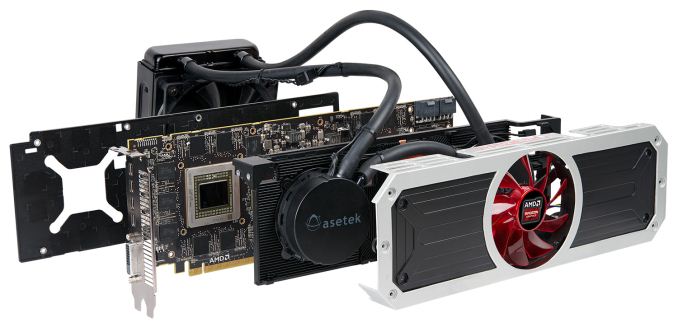


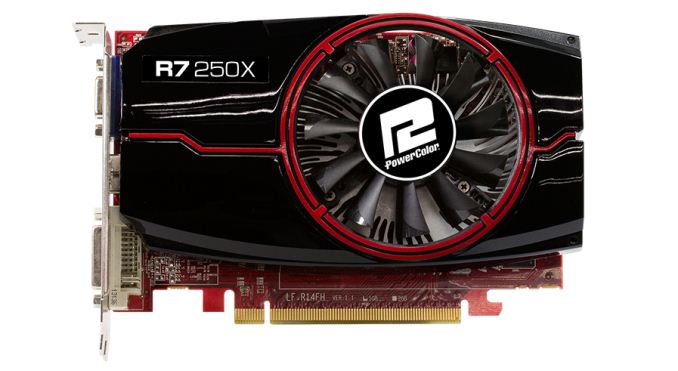
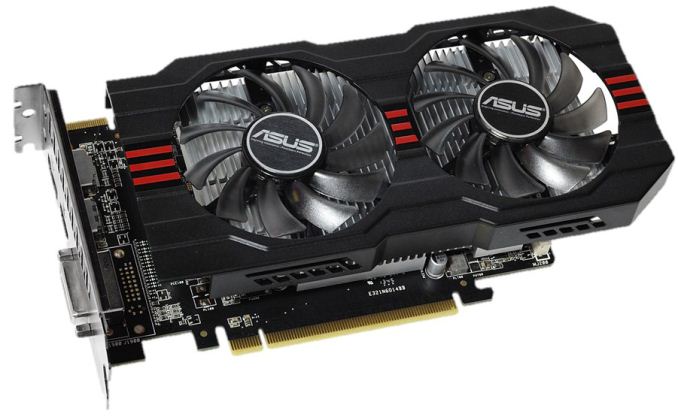
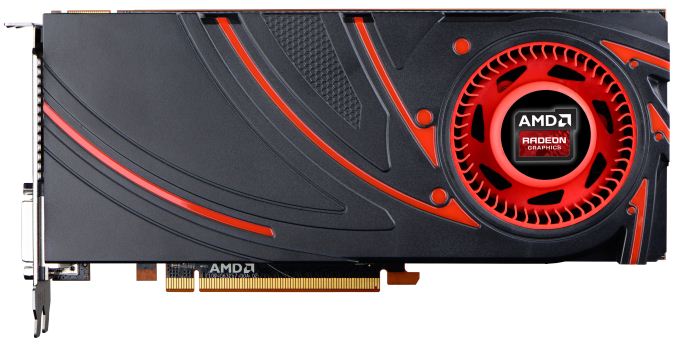
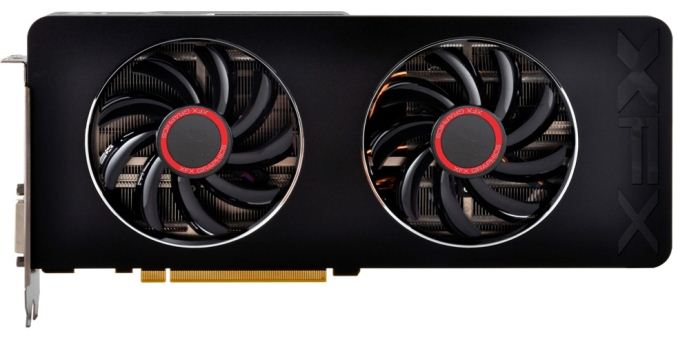

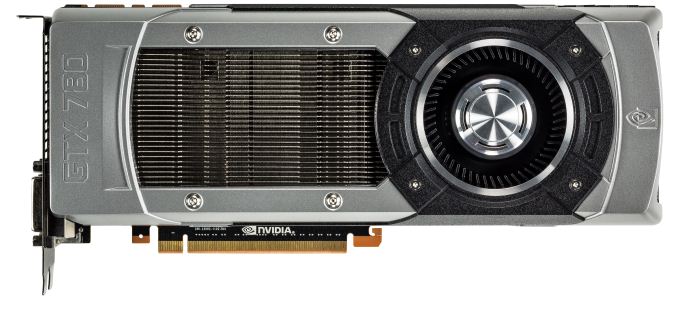
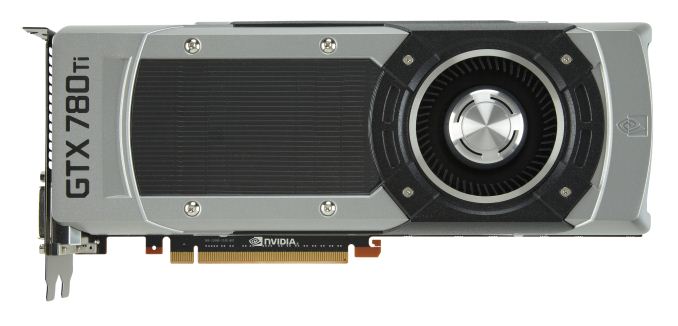
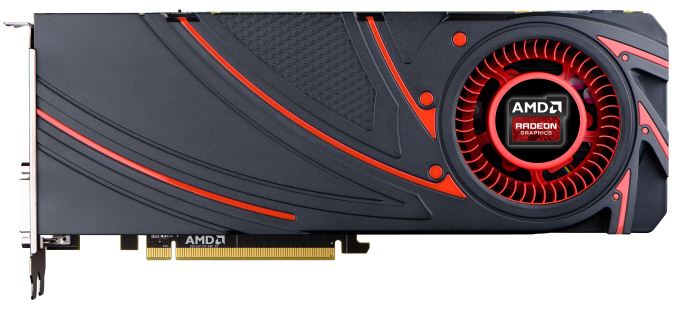








65 Comments
View All Comments
ezorb - Friday, May 2, 2014 - link
Agreed, its unseemly to have an AMD section and then find arguable inferior AMD products in each and every single category with a mention of Nvidia once and a while. Sure AMD is competitive on price if you let AMD define the price points.kyuu - Saturday, May 3, 2014 - link
So because they have the "AMD Center" they are obligated to ignore AMD in order to avoid looking "unseemly" to you? Right.Pretty sure that the author of the article defined the price points. You even admit that it's "arguable" if the AMD products are inferior (not that I can find any fault with the author's recommendations or his reasoning), but obviously he's a shill if he doesn't agree with you?
Anyway, I think the most convincing bit of evidence that there is no shilling going on is that Anandtech is continually accused of being in Intel's, AMD's, Nvidia's, Apple's, Samsung's, Google's, and Microsoft's pockets simultaneously, depending on the day and the article.
Impulses - Wednesday, April 30, 2014 - link
A review or overview of some of the different cooler variants for the 290 would be interesting... I started looking over the Amazon/Newegg reviews (I know, not the best source, was just price checking) and there was all sorts of conflicting info about certain coolers, particularly in CF configurations... Lots of reviews bashed what I thought were mainstays like the ASUS Cu, dunno if they were just sandwiching cars or what but they'd often go on to comment that switching brands/coolers fixed it so...Hrel - Wednesday, April 30, 2014 - link
Nvidia can't compete on price huh?According to your own bench there's a 50W difference at load. Let's use 30 hours/week of load for ease, which if you use the machine for video editing is very low.
.10c/KWh. 50W=.5c/hour 50W(.5 cents) times 30 hours = 15c
15c times 50 weeks (being conservative again) = $7.50
Keep your card 4 years, $7.50 times 4 = $30
No yeah, you're right, Nvidia can't compete on price at all /s
Then you factor in the superior stability of Nvidia products, superior support cycle (drivers), added features that Nvidia offers AND the fact that a card that's lower power will be quieter, or silent... the silence alone is priceless.
I could see that argument for the 270x vs GTX660 or even GTX760, but not the 750ti compared to the 265. Maxwell is just too good of an architecture.
kyuu - Wednesday, April 30, 2014 - link
1) $30 in electricity over 4 years is really not even worth considering, even assuming your math is correct (which I doubt).2) Your penultimate paragraph about superior stability and all that is pure personal opinion, not fact. I've been running a 6950 for years and have had zero problems with stability, drivers, or support. I dunno what added features you're talking about, either. PhysX? Who cares. Quieter? Maybe if you're using a reference cooler (but who does that?).
Hrel - Wednesday, April 30, 2014 - link
$30 is a lot of money when you aren't rich. For my personal use it'd be at least double that, which for AMD would bump the cost of the 265 up above the 270x. Which is the point, if you're going to do a price comparison you have to take into account the cost of ownership.Yes, my math is correct. 10c/kwh is the national average in America, higher through much of the country though. Lower in only a few places. PhysX, Shield, CUDA. I only actually use PhysX, but they're still possible value points for some.
Yes, I buy my cards and do no further modifications. Ain't no-body got time for dat.
Ananke - Wednesday, April 30, 2014 - link
You assume 30 hrs/week load of that GPU at max load. Nobody uses non-professional video card loaded with professional software that utilizes 100% load. Majority of people don't have time to play 7 hrs every day games too. So, your math in reality should bring the break even for price discrepancy at 25-40 years horizon :):)GTX 750 Ti is a beautiful card, but it is not price competitive, that's the truth. You pay premium for the brand. Should be around $100-110 max.
Hrel - Wednesday, April 30, 2014 - link
No, I'm not assuming max load at all. I took the figure from bench, loaded with Crysis, FAR from max.7 hours a day?.... 7 times 7 is 49...
Play a game or render video for 20 hours total over the weekend and 2 hours/day during the week. 30 hours. I render video during the week as well, so I'm 40+.
Despite this I agree that it's too expensive for the class of performance it offers, but that's true of ALL GPU's right now. By at least $50/card.
Hrel - Wednesday, April 30, 2014 - link
Then there's people who play MMO's, like ESO. 100+ hours/week.xrror - Friday, May 2, 2014 - link
Dude, if you're playing an MMO for 100+ hours a week, then $30 more a year in electricity is the least of your worries.